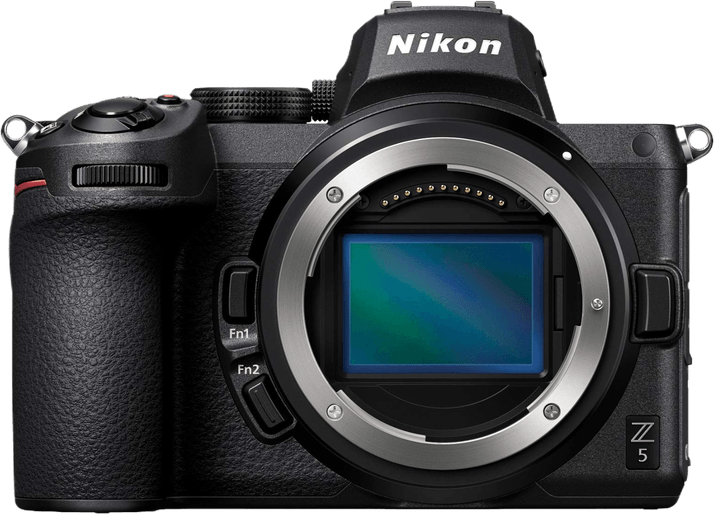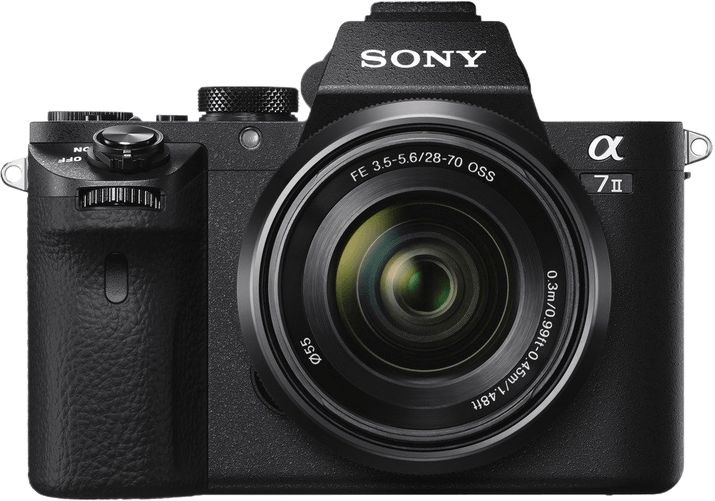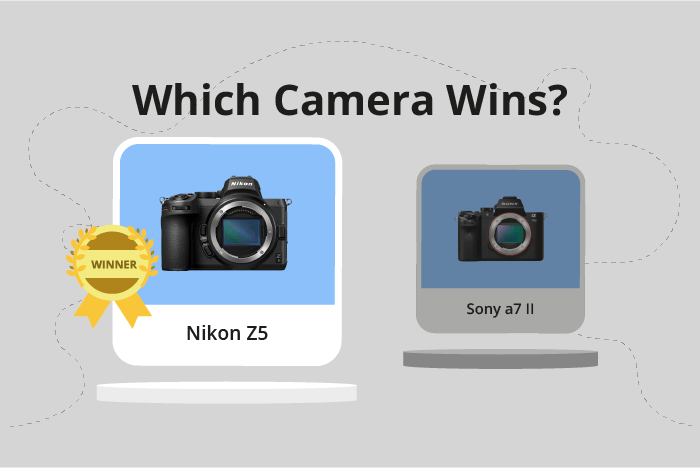Nikon Z5 vs Sony a7 II Comparison
Nikon Z5

Sony a7 II

The Nikon Z5 outperforms the Sony a7 II with a score of 78/100 compared to 69/100. Both cameras share similarities as mirrorless cameras, launched at prices of $1400 for the Nikon Z5 and $1600 for the Sony a7 II. They have comparable sizes, with the Nikon Z5 measuring 134 x 100.5 x 69.5mm and the Sony a7 II at 127 x 96 x 60mm.
The Nikon Z5 excels with its more recent release in 2020, providing updated features and technology compared to the Sony a7 II’s 2014 release. However, the Sony a7 II has a slight advantage in weight, being lighter at 599g compared to the Nikon Z5’s 675g.
Considering the higher score and more recent release, the Nikon Z5 emerges as the superior option. Despite the Sony a7 II’s lighter weight, the Nikon Z5 provides better performance and up-to-date technology for photography enthusiasts.
Nikon Z5 vs Sony a7 II Overview and Optics
The Nikon Z5 takes the lead in optics with a score of 81/100, while the Sony a7 II follows closely with a score of 78/100. Both cameras share similar specifications, boasting 24 megapixels, CMOS sensor type, full-frame sensor size, and image stabilization. Additionally, both cameras feature their respective lens mounts, with the Nikon Z5 using the Nikon Z lens mount and the Sony a7 II using the Sony E lens mount.
The Nikon Z5 surpasses the Sony a7 II in terms of the DXOMARK sensor score, achieving a 97 compared to the Sony a7 II’s 90. This difference indicates that the Nikon Z5’s image quality is superior. Furthermore, the Nikon Z5 is powered by the Expeed 6 processor, which contributes to its overall performance and efficiency.
On the other hand, the Sony a7 II has a slight advantage in shooting speed, capturing images at 5 frames per second compared to the Nikon Z5’s 4.5. This faster shooting speed may be beneficial for photographers who require quick image capture, such as those shooting sports or wildlife.
In terms of optics, the Nikon Z5 proves to be the stronger contender with its higher DXOMARK sensor score and advanced Expeed 6 processor. However, the Sony a7 II’s faster shooting speed should not be overlooked, as it may be a deciding factor for specific photography needs. Both cameras are solid choices for photographers seeking full-frame, image-stabilized cameras with their respective lens mounts.
Nikon Z5 vs Sony a7 II Video Performance
The Nikon Z5 outperforms the Sony a7 II in video capabilities, with a score of 83/100 compared to Sony’s 56/100. Both cameras share some common specs, such as a maximum video frame rate of 60fps. However, the Nikon Z5 surpasses the Sony a7 II in several aspects, contributing to its higher score.
The Nikon Z5 offers a maximum video resolution of 4K (3840 x 2160), while the Sony a7 II only supports Full HD (1920 x 1080). This difference in resolution means the Nikon Z5 can capture more detail and produce higher quality video footage. Additionally, the Z5 has time-lapse functionality built-in, which is not available in the Sony a7 II. This feature enables users to create stunning time-lapse videos without requiring additional accessories or software.
The Sony a7 II does not have any notable advantages over the Nikon Z5 in terms of video capabilities. Therefore, it is clear that the Nikon Z5 is the superior choice for videographers and content creators.
Considering these points, the Nikon Z5 is the better option for those seeking advanced video features and higher resolution footage. Its 4K resolution and built-in time-lapse functionality make it a versatile and powerful tool for capturing high-quality video content. On the other hand, the Sony a7 II falls short in these areas, making it less attractive for users focused on video capabilities.
Nikon Z5 vs Sony a7 II Features and Benefits
The Nikon Z5 outperforms the Sony a7 II with a feature score of 72/100 compared to the Sony’s 57/100. Both cameras share some common features, such as the absence of GPS, the presence of Wi-Fi, and flip screens. However, the Nikon Z5 surpasses the Sony a7 II in several aspects, while the Sony a7 II has few advantages.
The Nikon Z5 has a larger screen size of 3.2 inches compared to the Sony a7 II’s 3 inches. Additionally, the Nikon Z5 boasts a touchscreen, which the Sony a7 II lacks. This feature makes the Nikon Z5 more user-friendly and convenient for photographers to navigate through settings and review images. The Nikon Z5 also has Bluetooth connectivity, allowing for seamless sharing and remote control, whereas the Sony a7 II does not offer this option.
On the other hand, the Sony a7 II has a higher screen resolution of 1,230,000 dots compared to the Nikon Z5’s 1,040,000 dots. This advantage provides a clearer and more detailed image preview on the camera’s screen. Despite this higher resolution, the lack of a touchscreen and Bluetooth connectivity make the Sony a7 II less versatile and user-friendly than the Nikon Z5.
In comparing the features of these two cameras, the Nikon Z5 proves to be the superior choice due to its larger touchscreen and added Bluetooth connectivity. The Sony a7 II’s higher screen resolution does not compensate for its shortcomings in other areas. Therefore, the Nikon Z5 is the better camera for photographers seeking a versatile and user-friendly experience.
Nikon Z5 vs Sony a7 II Storage and Battery
The Nikon Z5 outperforms the Sony a7 II in storage and battery with a score of 73/100, while the Sony a7 II scores 35/100. Both cameras accept SD, SDHC, and SDXC memory cards, but the Nikon Z5 has two memory card slots and is UHS-II compatible, while the Sony a7 II has only one slot and also accepts Memory Stick Duo, Pro Duo, and Pro-HG Duo cards.
The Nikon Z5 offers a longer battery life of 470 shots with its EN-EL15c battery, compared to the Sony a7 II’s 350 shots using the NP-FW50 battery.
Although the Sony a7 II has a lower score in this comparison, its compatibility with Memory Stick cards provides additional storage options for users who own these cards. However, the Nikon Z5’s longer battery life, USB charging capability, and dual memory card slots make it a superior choice for storage and battery performance.
Nikon Z5 vs Sony a7 II – Our Verdict
Are you still undecided about which camera is right for you? Have a look at these popular comparisons that feature the Nikon Z5 or the Sony a7 II:

